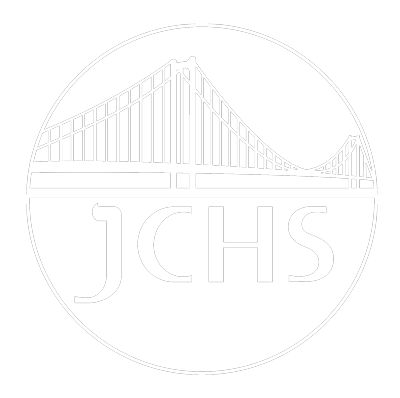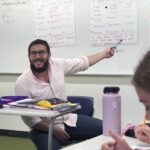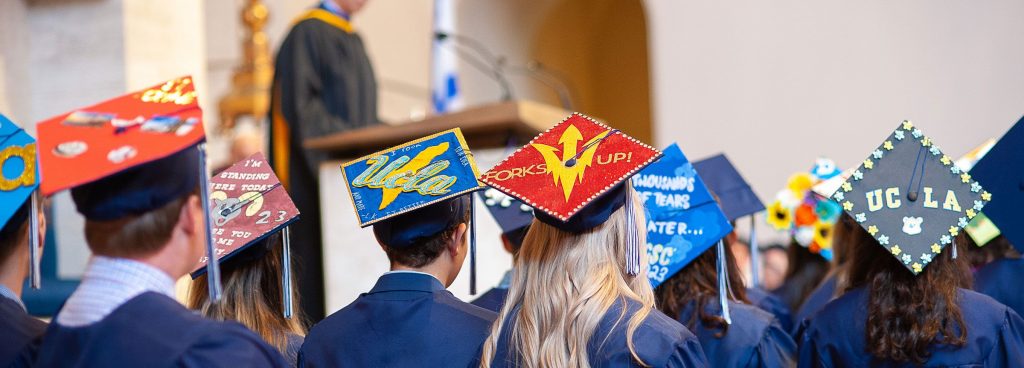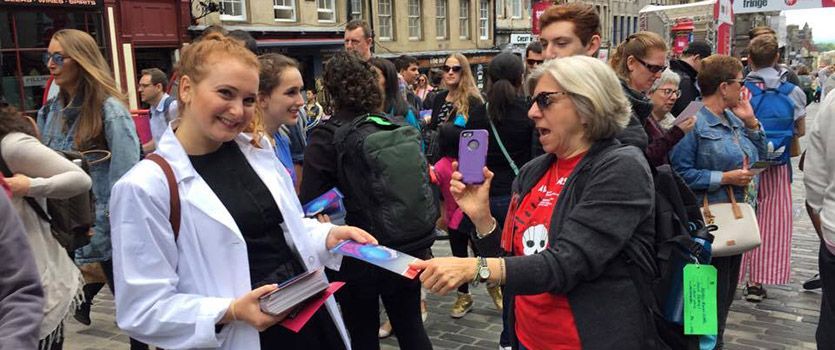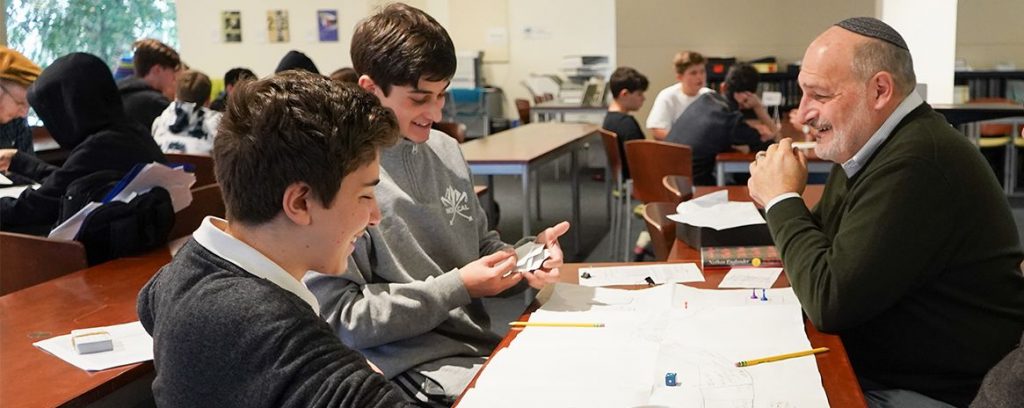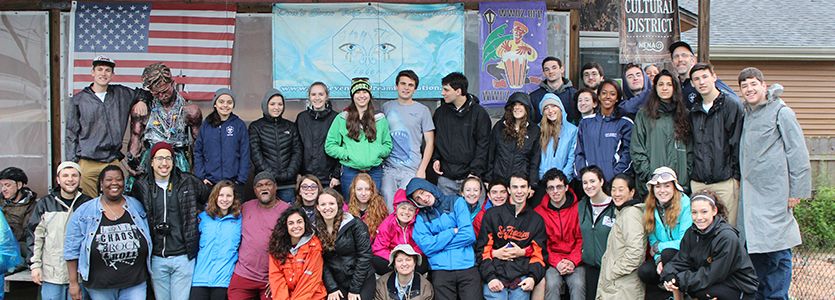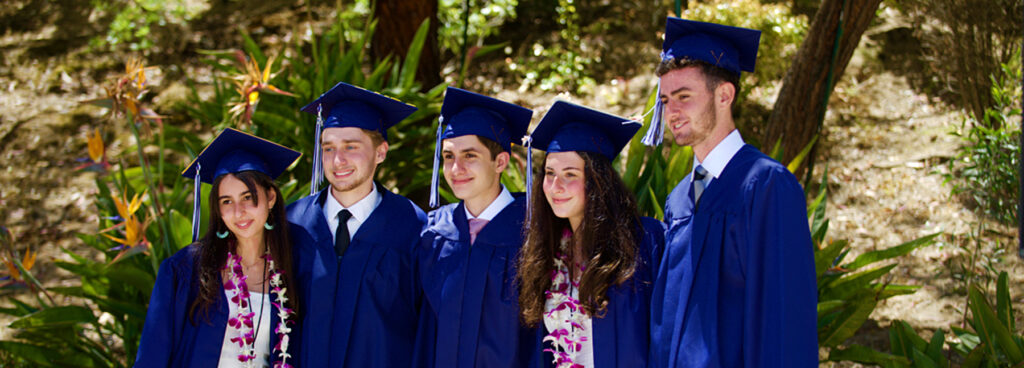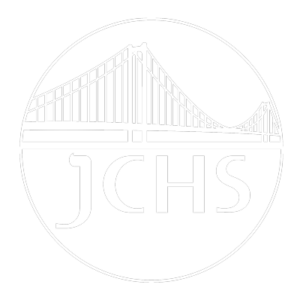World Language
Through World Language at JCHS, students develop their individual voices in the language and gain an understanding and appreciation of the culture in a creative and stimulating atmosphere.
Our World Language courses place students at the center of the learning process by using instructional methods that focus on creative projects, role-playing, presentations, individual online work, dialogues, and discussions. We provide a challenging, college-preparatory World Language Program with communication as its main goal. Throughout our classes, informed by progression and proficiency standards, students build cultural understanding and develop the skills needed to communicate confidently and effectively in real-world, authentic situations.
- Express themselves creatively in their speaking and writing
- Establish linguistic awareness
- Gain an understanding of how to study language
- Connect with the target culture and engage in authentic interactions with native speakers
World Language Requirements: Students may enroll in any first-year language course or take a course matching assessment to determine appropriate placement in a higher-level course. All students must complete at least two consecutive years of study in the same language, through level two. Continuing through level three is strongly encouraged.
HEBREW CORE COURSES
Open to: 9, 10, 11, 12
Prerequisite(s): Students are assigned to the correct level based on the Hebrew course matching assessment or their last Hebrew program text book.
These courses introduce English-speaking students to Modern Hebrew and develop their proficiency in reading, listening, speaking, and writing. Our goal is to have each student achieve mastery of these skills as they explore the richness of the language that has kept Jews together for thousands of years. We teach Hebrew in Hebrew, so that students are immersed in the language for the duration of the whole class. Lessons include such class activities as listening to conversations and songs, watching TV-clips and short movies, role-playing, creative writing (skits, stories, greeting cards, and advertisements), oral presentations, guest speakers and debates.
Levels one through three are a general introduction to Hebrew grammar and basic vocabulary. In Hebrew I, students build their vocabulary and practice short dialogues from day one, as they learn the alphabet. In most of these levels, an extra teacher is present to support students with documented learning needs. This push-in model is designed to integrate the individual processing and learning needs of the students. Levels four through seven explore themes thoroughly and expand vocabulary and grammar within that theme.
To learn more about the curriculum, click here.
Open to: 9 (by course matching assessment), 10, 11, 12
Prerequisite(s): Hebrew VI
This course will introduce students to contemporary Israeli literature. Students will explore a variety of themes, language structure, and the influence of traditional Jewish texts (from the Bible through the Talmud and later Jewish writings) on contemporary literature. A thematic approach will be used. Students will study poems, essays and short stories by various writers, such as Yaakov Shabtai, Hanoch Levin and Meir Shalev. Students will be reading a couple of novels throughout the year.
Prerequisite(s): Department Approval
This course will further develop speaking, writing, reading and listening comprehension skills. A thematic approach will be used. Students will present and debate their topic of study on a regular basis, engage in communicating with native Hebrew presenters and speakers, and read a couple of novels matched with their individual reading level and area of interest, one of them is Rebirth by Dvora Omer. Students will gain a deeper understanding of Israeli culture through contemporary literature and media content, among them “Apples from the Desert” by Savyon Liebrecht and “From Foe to a Friend” by S. Y. Agnon.
SPANISH CORE COURSES
Open to: 9, 10, 11, 12
This course will teach Spanish the same way everyone learned their first language. Starting the first week, we will communicate in Spanish, and it will be understandable for students through context, body language, acting, pointing, drawing, or translating the word to English from time to time. Students listen to and read messages in Spanish about their world as they compare it to the Spanish-speaking world and culture, like the December 31 running events in Latin America or the Bomba dancing of Puerto Rico, and work to develop proficiency in speaking and writing in Spanish. By the end of the year, students will be able to write about their and the Spanish-speaking world and culture in Spanish, using hundreds of words without hesitation. Toward the end of the course, we will also read our first short novel, Nueva escuela, nuevos amigos, which follows Antonio, a teenager navigating life in a new school, and his friendship with Adela. Through engaging in discussions of this novel in Spanish, students solidify their communicative skills.
Open to: 9 (by course matching assessment), 10, 11, 12
Prerequisite(s): Spanish I
Spanish II expands students’ speaking, reading, writing, and listening skills. Students learn new vocabulary and grammar (particularly the past) through thematic units covering topics such as celebrations, health, and family. Videos, short books, multimedia cultural presentations, and interactive activities reinforce content and immerse students in Spanish-language cultures.
For instance, students first learn about Jewish holidays celebrated at JCHS in Spanish, and then expand on this knowledge base to learn about Day of the Dead by reading the short novel Papálotl, watching Coco in Spanish, and reflecting on similarities and differences between celebrations in the U.S. and in the Spanish-speaking world. In the unit about health, students follow the adventures of a sick stray dog and a pair of Mexican veterinary students in the short novel Fénix, while also examining different ideas about health through videos and short writing projects. The short novel La mola misteriosa, where a Columbian teen learns about her family’s past, provides a jumping-off point for discussions of the students’ families and cultural backgrounds.
Open to: 9 (by course matching assessment), 10, 11, 12
Prerequisite(s): Spanish II
In Spanish III, students develop their skills through immersion in cultural contexts. In the first months of class, students take an imaginary trip to Guatemala to learn about Central American culture and history. Through the reading of short novels like Esperanza and the study of the present tense, students learn to communicate ideas about Hispanic culture and the adventures of characters. In the second part of the course, the book Frida immerses students in the sociocultural context of the famous artist Frida Kahlo, her life, and her work. Focusing our attention on the past tense, students learn to express experiences in the different forms of the past while enlarging their understanding of other grammatical structures. Finally, students delve into the uses, representations, and larger cultural implications of coffee in a unit designed to increase communicative competence and cultural awareness in the Hispanic world. Overall, the class is supported by audiovisual materials and skills are developed through conversational and written assignments.
Open to: 9 (by course matching assessment), 10, 11, 12
Prerequisite(s): Spanish III
In Spanish IV, studentsstrengthen their ability to listen, read, write, and speak about complex topics in Spanish. Students start with an introductory unit where they delve into their own names, identities, and family histories. We then explore the history of Latines in the United States through biographies of Spanish-speakers in early California, a research project centered on Mexican land grants in the state, the short book Vidas impactantes, and a feature-length film, Bajo el mismo cielo. Students go on to explore Argentinian history through the lens of La guerra sucia, a novel, and the film Historia Oficial. Finally, students engage with the Spanish civil war through a short novel, La hija del sastre, Picasso’s Guernica, the film El laberinto del fauno, and selected poetry. These units allow students to grapple with Latin American and Spanish history and culture, while introducing them to grammatical structures (such as the subjunctive, the conditional, and the past perfect) needed for a more nuanced discussion of the topics.
Prerequisite(s): Spanish IV and Department Approval
In AP Spanish Language and Culture, students develop advanced language skills through the study of real-life authentic materials such as articles, clips, podcasts, etc. These sources immerse students in the culture, politics, and current events of the Hispanic world, focusing on communities, identities, science and technology, and arts, among other AP-relevant subjects. The communicative activities around these themes allow students to learn complex grammar structures, idiosyncratic expressions, and communicate complex ideas in essays, emails, conversations, and cultural presentations. In the last months of the course, students get acquainted with the exam format and learn to be comfortable with the complex communicative demands of the AP exam.
Prerequisite(s): AP Spanish Language and Culture
This course will introduce students to advanced cultural materials from the Spanish-speaking world. Through literature, film, art, and the development of academic projects, students will develop sophisticated language skills, while exploring and discussing the history and culture of the Hispanic world. In addition, students will strengthen their conversational skills and their grammatical accuracy through constant immersive contexts and relevant communicative situations.
